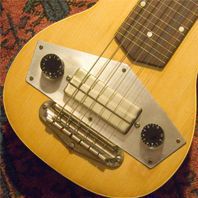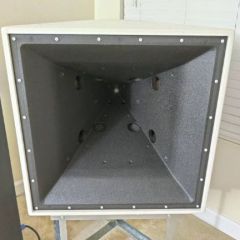Leaderboard
Popular Content
Showing content with the highest reputation on 08/06/18 in all areas
-
7 points
-
4 points
-
4 points
-
I tend to agree with the wifey on this one. It will also make your home easier to sell.3 points
-
Now you're getting serious Mike! Got "Songs From the Wood" in the background here right now!3 points
-
3 points
-
3 points
-
I needed to VENT! The basement lavatory is not original to this 1948 home. It was, apparently, added by someone who didn’t appreciate the need to vent the drain. Flushing the vented toilet upstairs would procduce gurgling sounds in the basement lav. A real plumber added an interior mechanical vent to the sink drain. Now small cats could be flushed without noises, other than momentary squealing, or problems. The vacuum caused by draining opens the vent to draw in air. A spring then closes it to prevent sewer smells, or cats, from entering the basement. Sort of like an Indycar pop-off valve, but in reverse.3 points
-
Awesome, another member with solid credentials. I only pretend sometimes that I know what I am talking about. Bill2 points
-
Same here. Place would be worth more if we tore it down. This place qualifies as a cluster f($%& ... But it's home. We got cemetery plots with the purchase of this place. That's what sold us... What a deal! lol2 points
-
Philosophically unknown, reason's with no unlikeliness, Naturally a happening2 points
-
This thread is almost dead... What are we out of coffee.. Cables.. Or is everyone getting tail..2 points
-
Pardon the ratty laundry room view of the basement lav plumbing. Much to my wife’s chagrin, we are living in a “tear-down.” Improvements are made to enhance our enjoyment, not as an investment. The house is a liability on the lot. We plan to live here until hauled out horizontally. The 1948 house and I are the same age. In this neighborhood, our 1,000 sq. ft. house will be torn down when we’re done with it. The summer shot shows the front the day the Frankensmurfs were delivered. The winter scene shows the view across the street. Of the four houses visible, 1 and 3 are new larger homes, 2 and 4 are original smaller homes. Most of the new builds are many times larger than the houses they replaced. We’re in the process of remodeling the tiny galley, I mean kitchen. My wife doesn’t understand that doing so does NOT enhance the resale value of the house. I love the reality that our lot is worth more without the house. A rising tide lifts all boats, but the value is lifted whether or not it has granite counters. My wife can’t get it out of her head that updating kitchens and baths does not always enhance value.2 points
-
Hello Hello! Well, sorry it’s been a while fellow Klipscheads, but I’ve been SUPER busy this summer...anyway. So Claude and I got together for a full fledged Audio Geek out today, spent about 9 hours running tests and tweaking my SH 1.5’s. Sense I last reported, I’d made some changes. The top and mid was just too hot with the taps jumped 3db. Even with my vintage McIntosh Tube setup and vinyl it was screamin hot. So I know Knocked the taps back to original E2 specs and took the 2nd 2uf cap off the mid and tweeter. While this certainly solved the “brightness” issue...I brought about a dullness. The top was basically gone. (As the measurements proved) So after having to cancel last weekend(Sorry again Diz and Claude, hope to meet you soon Diz!) I made it over to Claude’s today, SH’s in toe. we hooked one up and ran a sweep....believe @ClaudeJ1 will be in later with the plots, the werebasically rolling off hard a 6k!!!! No wonder there was no “sparkle”. This is when hen we decided to try a number of different crossover configs, none of which helped fully. Then greatness happened...we installed the B&C DE 120 tweeter using a billet aluminum “horn lens”. I soldered em up right quick...slapped the SH’s back together and didn’t even need to see the sweep plotted to know it was finally right....I could hear it. The graph confirmed with a VERY flat response out to 20k. After a nice long day, I was ready to get home. But not before I soldered the other tweeter and mounted it. I hadn’t yet heard music through them...so I raced home. Hooked the SH’s up to a nice strapped MC240 each(total overkill, I’ve got the gain way down, but why not?) and they sounded incredible! Im pretty happy, after thinking I’ve had it a few times.....still thinking it could use a bit more. Well that bit more is the tweeter and the gorgeous aluminum tweeter lens! While the original tweeter can remain.....after hearing the B&C...it’s just worth it. So as @ClaudeJ1 said “different is different” I now believe this to be the best version of the Super Heresy 1.5. We found the response was flatter WITH the 33uf cap. Measured both. Bass response remains GREAT in real listening...I forget the numbers as I was more focused on the top end. at any rate...it’s been a long day, but wanted to update. I’ll be back with more info in the next few days. heres a few pics with the new tweets2 points
-
“Also I am a cheap skate and not willing to spend a lot on these to begin with. Do you have a source of decent caps at Dayton prices?” https://solen.ca/product-category/capacitors/fast-capacitors-250v-pa-series-metallized-polypropylene/2 points
-
2 points
-
2 points
-
Yep, like my La Scalas, efficient as all getout! And I've got a McIntosh MC2105 driving my La Scalas! I can practically launch this HOUSE into the stratosphere! :-) John Kuthe...2 points
-
2 points
-
2 points
-
2 points
-
They claim the leads are soldered with silver solder. They aren’t - though I was able to confirm ultrasonic welding.2 points
-
2 points
-
2 points
-
According to Facebook, today is Dave @Mallette's birthday. Happy Birthday Dave.1 point
-
I have always relied on Dr. Dr. Larry @LarryC for that insight.1 point
-
Edit: More time to add to my list Vivaldi - The Four Seasons Bach - Brandenburg Concerto No, 2 Bach—Violin Concerto in E Major Haydn—Symphony No. 104 Mozart—Piano Concerto No. 24 in C Minor Mozart—Symphony in C Major, “Jupiter” Beethoven—Symphony No. 3 Beethoven—Piano Concerto No. 4 Beethoven—Symphony No. 9 Schubert—Symphony No. 9 Mendelssohn—“Italian” Symphony Schumann—Symphony No. 3 Brahms—Symphony No. 4 Brahms—Violin Concerto Tchaikovsky—Symphony No. 4 Tchaikovsky—Violin Concerto Bedřich Smetana—Má Vlast Dvořák—Symphony No. 8 Dvořák—Concerto for ’Cello Rimsky-Korsakov—Scheherazade Richard Strauss—Thus Spoke Zarathustra Mahler—Symphony No. 5 Holst - The Planets I think that is 23, and I still have Rachmoninov and Stravinski, etc.1 point
-
1 point
-
Yeah I know, that's step 2 and I was thinking that same thing a few minutes ago.1 point
-
Amen !! Yep don't ask a machine or anything else to put out 90% + and you might not be disappointed with it. Had one low powered 40 wpc continuous rms Nakamichi the I could put at 3 to 4 pm on the pot all day long and it never clipped. Never had anything else I ran close to 2:00. Then again Nelson Pass designed that one. I'm getting plenty of db at high noon on the current rig although I put it to 1:00 briefly before.1 point
-
I physically layout all of the dimensions and drilling locations from my "blueprint" to the plates with a mechanical pencil, clear 18" ruler and machinists square. After the layout is complete for each plate, I use a spring-loaded marking tool to create a dimple at each drill point for the bit to start from. This is very important as it prevents the bit from "walking" off the desired drilling location. Using one of my two drill-presses, I mill each hole accordingly (note: DO NOT USE ANY CUTTING FLUID AS IT WILL DISALLOW THE "RESIST" FROM ADHERING TO THE PLATES FOR THE ETCHING PROCESS). Go slowly, wear hearing protection. I use titanium nitride coated twist drills, step-bits, and hole-saws to mill the aluminum. Chamfered counter-sinks are done using carbide end-mills mounted in the drill press.1 point
-
That's a pretty wide bucket to draw from, it seems. Here is a list (for all you list lovers) put together by "151 of the world's leading conductors" of the best known symphonies via the BBC. I'm not sure what the decision criteria were but this will at least get you calibrated to the musicians themselves...or at least the people that wave their wands around while orchestra musicians make the music...which may be biased to something that the listeners may not share: https://www.wned.org/radio/wned-classical-945/20-greatest-symphonies/ No. 20. Bruckner: Symphony No. 7 Written in 1883, just after the death of Richard Wagner, this symphony, as a homage to that great composer of operas, has parts for four Wagner tubas. And oh… what a glorious sound they make. No. 19. Beethoven; Symphony No. 6, Pastoral This is the first symphony to make its inspiration obvious and, less obviously, the first symphony to ask of its listeners not “what do you think of this”, but “how does this make you feel?” No. 18. Brahms: Symphony No. 2 At a time of Romantic excess this symphony, written by a composer on vacation in the Alps, manages to balance the highs and lows perfectly so that it has claims to being the best constructed symphony written in the second half of the 19th century. Still, it’s so pleasant you hardly notice the craft behind its constant flow of melody. No. 17. Shostakovich: Symphony No. 5 The ambiguities of the 20th century mark this symphony as a great conundrum. Is it an ironic send up of triumphalist rhetoric or is it a sensational paean of hope? Answer: it could be both. No. 16. Beethoven: Symphony No. 7 This symphony, called by Wagner “the apotheosis of the dance,” constitutes a vast feedback loop between the physical sensations the music evokes in the listener’s body and the emotions that course as a consequence through the mind. No. 15. Mozart: Symphony No. 40 Edgy and at least once positively atonal, this minor key symphony reveals its composer as at once the most human and the greatest dramaturge of the classical period. No. 14. Sibelius: Symphony No. 7 The composer of this brief symphony wrote it with a bottle of whiskey always within reach. He knew, if the world did not, that it would be his last symphony. No composer has ever left a better testament. No. 13. Bruckner: Symphony No. 8 A vast work with Sierra-like gleaming snow-capped peaks and soft, forested valleys, this symphony pays homage to both Bach and Beethoven over the course of its high peak hike. No. 12. Brahms: Symphony No. 3 No question about it, this symphony contains all kinds of personal messages. Over its four movements it tells the tale of an unconsummated love affair that begins with a musical clue to its content: just 4 notes: F, A, A-flat, F. Those notes stand for “Frei aber Froh,” German for “Free but Happy”. No. 11. Beethoven Symphony No. 5 Perhaps the most famous, if not the greatest, symphony of all time. It is the first symphony that takes aim with its first notes at its very last notes, pushing the listener ever forward, sometimes relentlessly and sometimes gently on to the mighty C major ending. No. 10. Mahler: Symphony No. 3 A gigantic symphony that began with a simple question that led to a very long answer. “What do the rocks tell me?” That’s the same question that geographer, explorer Alexander Humboldt asked a few generations before the composer got around to it. Both geographer and composer came up with profound if very different answers. No. 9. Tchaikovsky: Symphony No. 6, Pathetique This is a symphony that has always been associated with tragedy because the composer’s death soon followed the premier. Some have even interpreted this symphony as the world’s longest suicide note. No. 8. Brahms: Symphony No. 1 “You don’t know what it’s like for the likes of us when we hear footsteps behind us.” Those were the words of the composer of this symphony when he was asked why it took him so long to write it. And exactly whose footsteps was he hearing? No. 7. Berlioz: Symphonie fantastique This is the symphony that forever linked the autobiography of the composer to the music he might write. Like his life, his symphony is a mixture of reverie and wildness. No. 6. Brahms: Symphony No. 4 This symphony is a last symphony that is a true summing up musically. It is a work by a man obsessed with music’s past and its great creators… Bach, Mozart and Beethoven. Yet it maps out a future for the symphony as well. No. 5. Mahler: Symphony No. 2, Resurrection Hearing this long symphony, the critics called it a “monster” and its composer “impious”. But audiences were transported by it; they hardly noticed its touches of Nietzsche and Freud. No. 4. Mahler: Symphony No. 9 This is another “last” symphony even though the composer didn’t know it. It is also the largest “last” symphony of them all with a percussion section that includes timpani, bass drum, triangle, cymbals, tam-tam, glockenspiel and three deep bells. No. 3. Mozart: Symphony No. 41, Jupiter Yet another “last” symphony in which the composer seems to revel in creating conflicts that only he can unravel. It’s a symphony written deeper than most, a demonstration that harmony not melody is at the heart of what stirs us in music. No. 2. Beethoven: Symphony No. 9, Choral What do you do when music alone won’t do what you want it to? You write this symphony, but only one deaf composer could do it. No. 1. Beethoven: Symphony No. 3, Eroica This symphony changed everything about music. Before it, music served as hand maiden to other purposes and activities. Symphonies were stimulating diversions, pleasing and, often, moving entertainments. This symphony, however had the power to change the people who heard it, to grab them, lift them, completely engage them and finally without reference to class or religion inspire them.1 point
-
Howdy all, my next step in building an amplifier is cutting all of the 1/8" (3mm) 6061 Aluminum plates and milling/drilling them. DISCLAIMER: for you DIYers out there, I do not advocate that this be done at home by those of limited skill or unfamiliarity with the tools I use. I take NO responsibility for any mishaps that may occur. This is highly dangerous, please consider risk vs. reward before attempting to replicate ANY of my processes. This works for me, YMMV. I develop all of my layouts on 11" X 17" graph paper for all of the amplifiers I build. This helps visualize the amplifier and gives me a blueprint to work from. I use a Diablo "non-ferrous" blade mounted in my table saw to perform all of the cuts. I proceed slowly and clear the aluminum chips from the top of the saw after every single cut. Additionally, there is normally a burr created on the edge of the cut that must be sanded off prior to each subsequent cut to allow the plate to sit flat for the next cut. This process takes quite a bit of time so plan accordingly. Eye protection is MANDATORY, I wear safety glasses AND a full-face shield. Wear long-sleeved shirts, hot aluminum chips can and will burn you.1 point
-
1 point
-
I'd normally agree, if the same account wasn't posting javascript codes to known phishing websites on the Emotiva forums...1 point
-
Let's think about this, both A and B are connected internally. How do I know? They share a power supply. What does that mean? If you run both pair, you are essentially running your speakers parallel which decreases the impedance in half. Two 8 ohm speakers makes a 4 ohm nominal load. As long as the amp is designed to run at 4 ohms, you most surely WILL make more power. Double? More than likely not unless you have a beefy power supply. This concept is done all the time in car stereo systems.1 point
-
it is really spectacular. I am really loving it. Audio memory being what it is, as well as tonearm and phono pre changes but I would say that this is my favorite in a long line of cartridges. J1 point
-
I think it's interesting and informative. You've added nothing to the discussion, so are in fact boring.1 point
-
1 point
-
1 point
-
1 point
-
RMS = Root Mean Square. It's a mathematical way of determining an "average" amplitude of an alternating waveform such as sound produces. John Kuthe...1 point
-
1 point
-
I have a 5 watt zen (el84) on the way, I have wondered about decware for a long time myself, I have a stash of very nice EL-84 tubes that I have been looking for an amp to use them with. I will post impressions I should get it this week. Going to have somewhat of an amp shootout to find out which best suits my setup then a massive sell off of anything that does not meet my needs.......................Fun1 point
-
1 point
-
1 point
-
Marantz 1200B integrated amp fully restored by Stereo Rehab. This is essentially a Model 3300 preamp and a Model 250 amp. Me likey....[emoji106] Sent from my SM-G950U using Tapatalk1 point
-
After those gentlemen man-handling those amps day after day... I'd not want to arm wrestle any of them!!! Some nice pictures.1 point
-
1 point
-
Not all source components and amps sound the same. I would recommend lots of clean power with the capability of doing tight bass. Components that are bright need not apply. The thing that is little understood is efficiency doesn't mean everything and is not the end all. Component synergy is the key.1 point




























.thumb.jpg.ef78732a731094d2f33cd0c347737e86.jpg)
.thumb.jpg.099887611a5004cbabdbaa71e611aee6.jpg)


